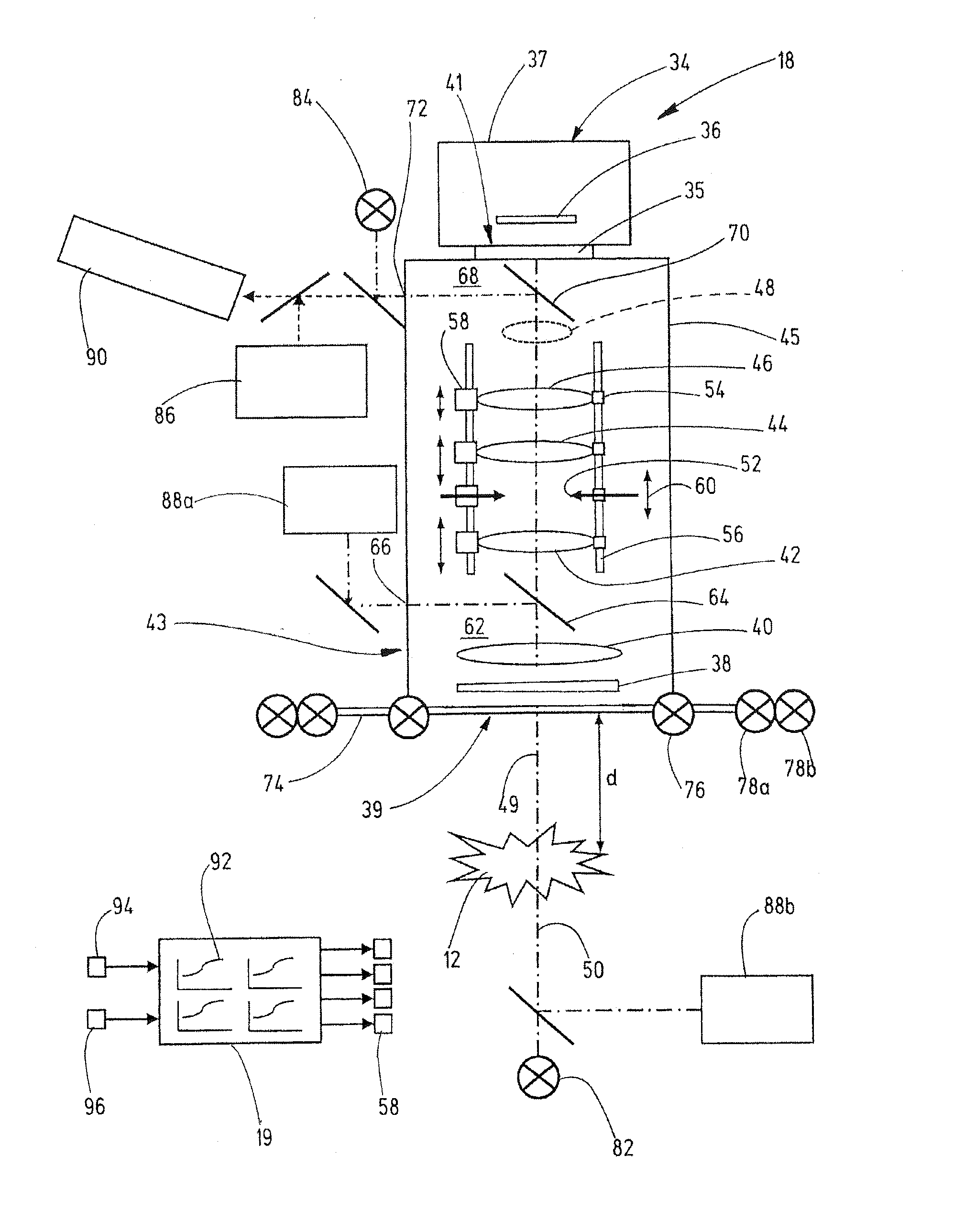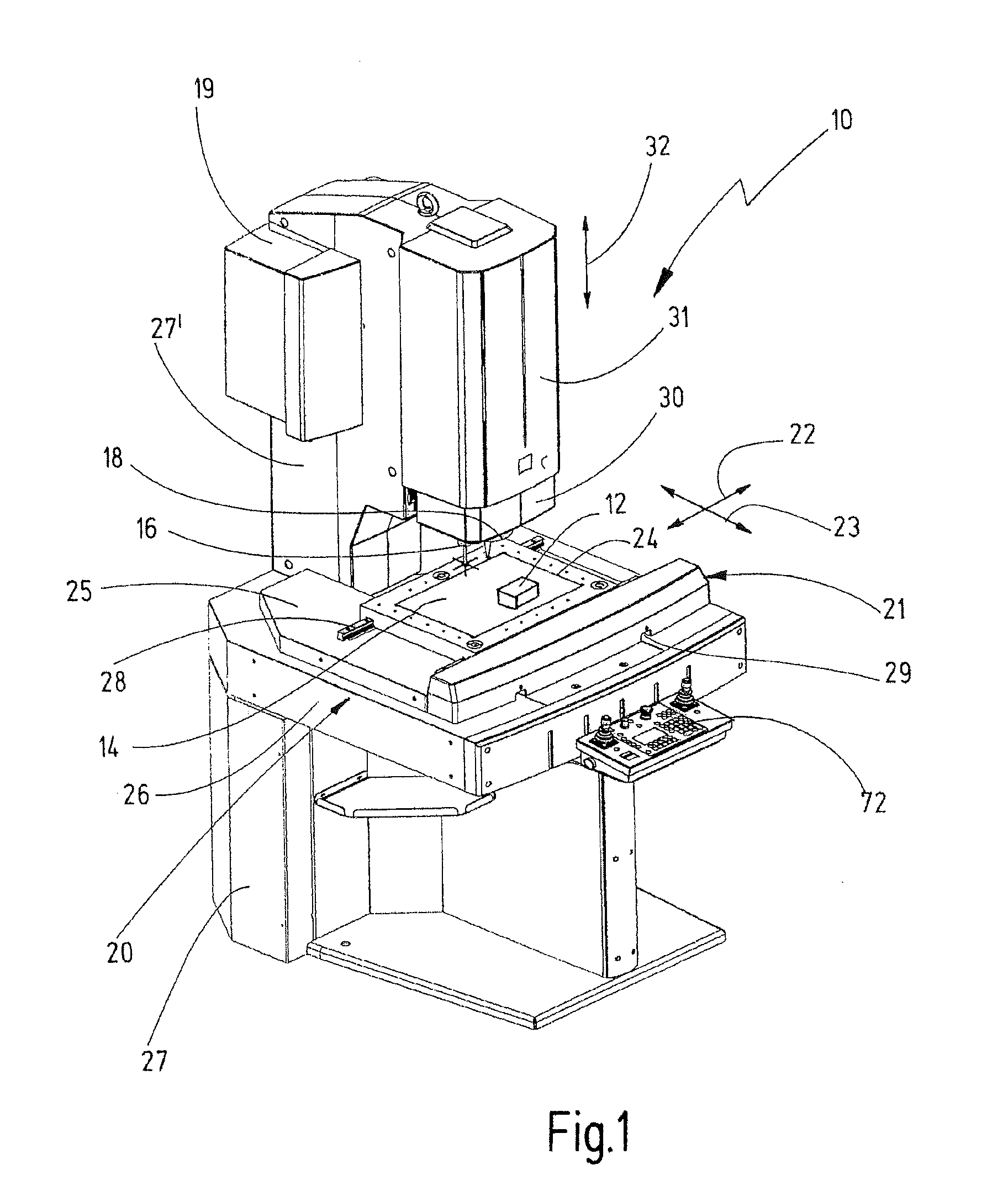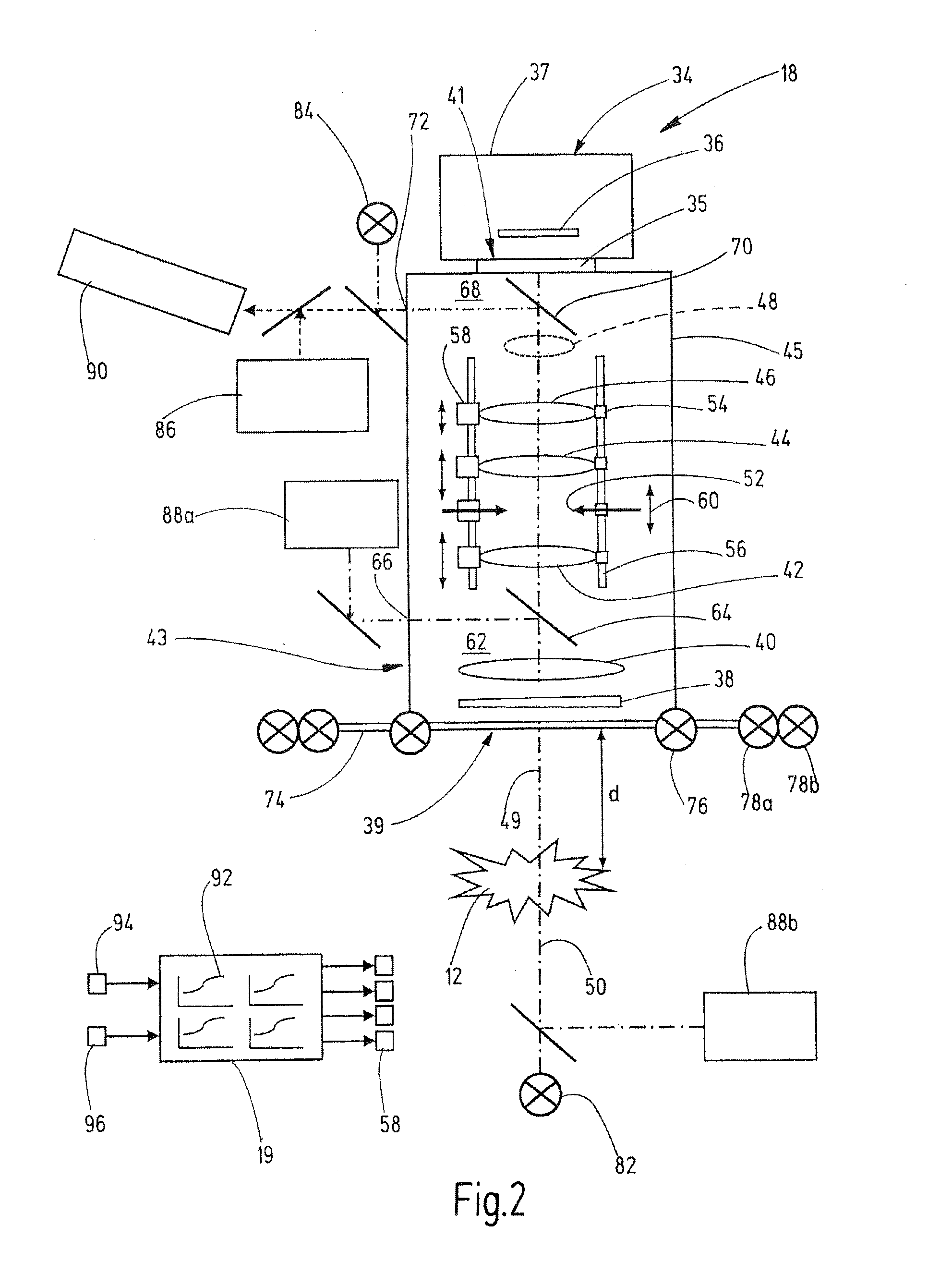Chromatic sensor and method
a chromatic sensor and sensor technology, applied in the field of chromatic sensor and method, can solve the problems of limited use of optical sensors, limited measurement tasks and specific workpiece properties, and less well suited to other purposes, so as to increase the flexibility of new objectives, and facilitate the coupling of defined illuminations
- Summary
- Abstract
- Description
- Claims
- Application Information
AI Technical Summary
Benefits of technology
Problems solved by technology
Method used
Image
Examples
Embodiment Construction
[0076]FIG. 1 shows an apparatus 10 for inspecting a measurement object 12 arranged on a workpiece carrier 14. In the embodiment illustrated, the apparatus 10 is a coordinate measuring machine. The measurement object 12 is measured by means of one or a plurality of optical sensors 18. Selectively, one or a plurality of tactile sensors 16 can additionally also be provided.
[0077]Coordinate measuring machines are generally known in the prior art. They are used, for example in the context of quality assurance, to check workpieces or to determine the geometry of a workpiece completely in the context of so-called “reverse engineering”. Furthermore, a wide variety of further application possibilities are conceivable, thus for example including the additional use for inspecting surfaces.
[0078]In such coordinate measuring machines, different types of sensors can be used to detect the coordinates of a workpiece to be measured. By way of example, sensors that effect tactile measurement are know...
PUM
 Login to View More
Login to View More Abstract
Description
Claims
Application Information
 Login to View More
Login to View More - R&D
- Intellectual Property
- Life Sciences
- Materials
- Tech Scout
- Unparalleled Data Quality
- Higher Quality Content
- 60% Fewer Hallucinations
Browse by: Latest US Patents, China's latest patents, Technical Efficacy Thesaurus, Application Domain, Technology Topic, Popular Technical Reports.
© 2025 PatSnap. All rights reserved.Legal|Privacy policy|Modern Slavery Act Transparency Statement|Sitemap|About US| Contact US: help@patsnap.com



